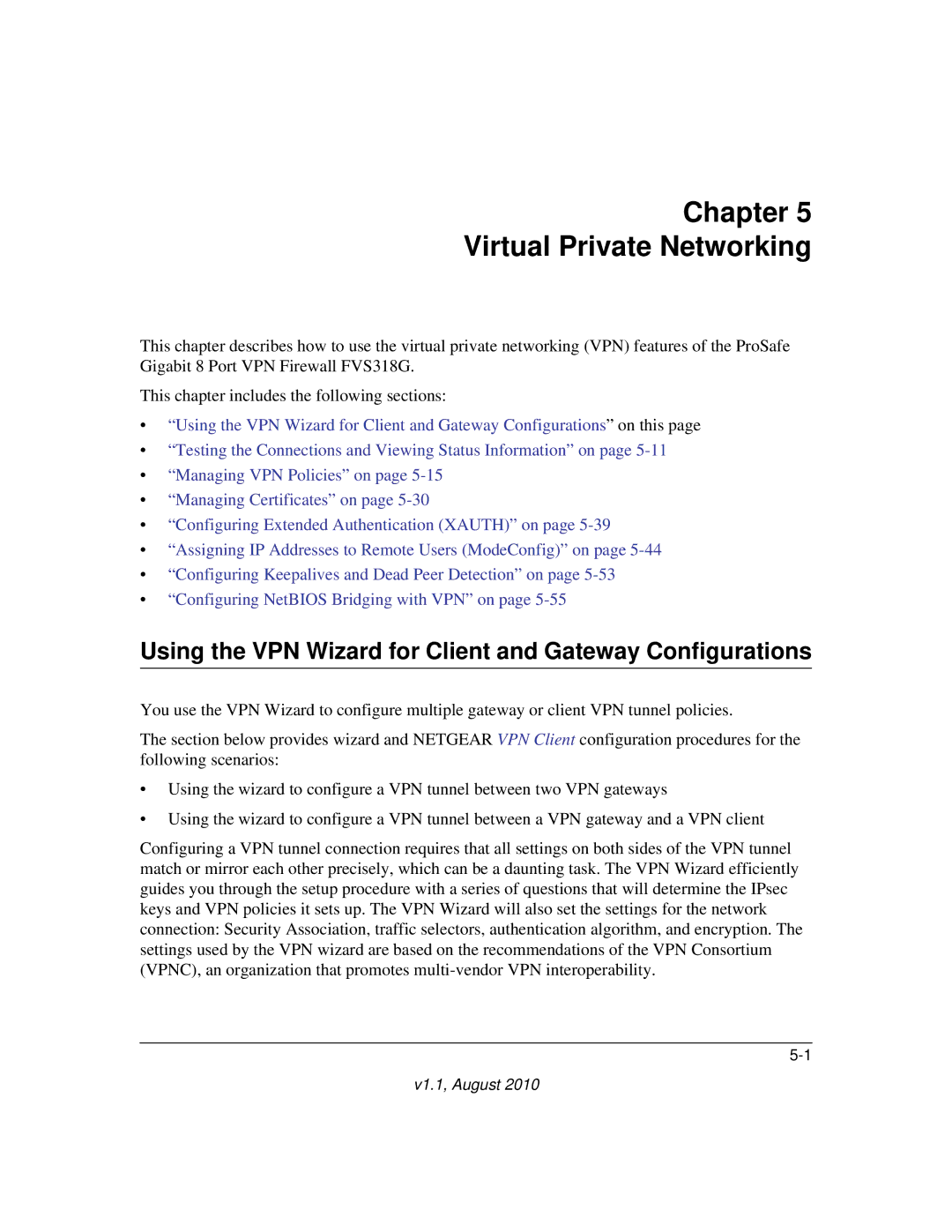
Chapter 5
Virtual Private Networking
This chapter describes how to use the virtual private networking (VPN) features of the ProSafe Gigabit 8 Port VPN Firewall FVS318G.
This chapter includes the following sections:
•“Using the VPN Wizard for Client and Gateway Configurations” on this page
•“Testing the Connections and Viewing Status Information” on page
•“Managing VPN Policies” on page
•“Managing Certificates” on page
•“Configuring Extended Authentication (XAUTH)” on page
•“Assigning IP Addresses to Remote Users (ModeConfig)” on page
•“Configuring Keepalives and Dead Peer Detection” on page
•“Configuring NetBIOS Bridging with VPN” on page
Using the VPN Wizard for Client and Gateway Configurations
You use the VPN Wizard to configure multiple gateway or client VPN tunnel policies.
The section below provides wizard and NETGEAR VPN Client configuration procedures for the following scenarios:
•Using the wizard to configure a VPN tunnel between two VPN gateways
•Using the wizard to configure a VPN tunnel between a VPN gateway and a VPN client
Configuring a VPN tunnel connection requires that all settings on both sides of the VPN tunnel match or mirror each other precisely, which can be a daunting task. The VPN Wizard efficiently guides you through the setup procedure with a series of questions that will determine the IPsec keys and VPN policies it sets up. The VPN Wizard will also set the settings for the network connection: Security Association, traffic selectors, authentication algorithm, and encryption. The settings used by the VPN wizard are based on the recommendations of the VPN Consortium (VPNC), an organization that promotes
